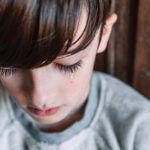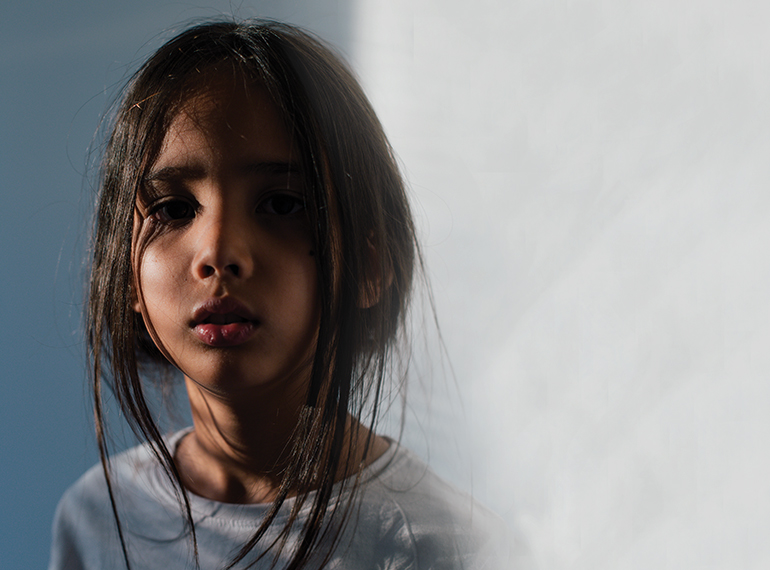Childhood maltreatment, or abuse and neglect in the first 17 years of life, potentiates mental, physical, and relational health problems across the life-course. In 2017, there were over 4.1 million cases of childhood maltreatment reported to child protective services (CPS), affecting more than 7.5 million children. These children include those who remain in their house, children who are placed in kinship care with a family member, and children who are placed in foster care. In the same year, 1,720 children died as a result of child abuse and neglect (U.S. Department of Health & Human Services [USDHHS], 2019). Further, girls demonstrate slightly higher rates of childhood maltreatment, which can be largely attributed to girls being nearly five times more likely to be sexually abused compared to boys (Sedlak et al., 2010). Maltreatment can of course be found in any socio-economic population, however, the World Health Organization (2016) notes that a number of characteristics of communities and societies may increase the risk of child maltreatment, including lack of adequate housing or services to support families and institutions, and high levels of unemployment or poverty.
What is more distressing than the high rates of maltreatment reported to CPS is that a large percentage of maltreatment goes unreported. More than one in three adults report maltreatment in childhood (Center for Disease Control, 2016). These statistics are troubling given the consequences of maltreatment.
Maltreatment has multifaceted effects on children’s developmental trajectories, affecting their biological, social, behavioral, and emotional functioning (D’Andrea, Ford, Stolbach, Spinazzola, & van der Kolk, 2012).
Due to the millions of children who are reported to CPS and millions more who are maltreated but are not acknowledged, understanding risk factors for maltreatment is crucial for prevention and intervention efforts. It has been found that maltreatment occurs across all genders, races/ethnicities, income, and education levels, although specific types of maltreatment tend to occur within certain groups. For example, age is consistently associated with neglect and sexual abuse. Younger children are more likely to be neglected (USDHHS, 2019) and older children are more likely to be sexually abused (Putnam, 2003). Additionally, sexual abuse is also more likely to occur among girls than boys (Putnam, 2003). There are also contextual risk factors for child maltreatment, many of which occur within the family system. Families who experience frequent conflict, low family cohesion and closeness, have a parent with mental health issues, unemployment, single parenthood, larger family size, and lower parental age are at risk for maltreatment (Stith et al., 2009).
Behavioral and emotional outcomes
Maltreatment potentiates negative developmental trajectories in children and adolescents, commonly resulting in behavioral and emotional problems. Research has identified that emotional abuse, physical abuse, and sexual abuse, as well as neglect, are commonly linked to internalizing problems such as depression, anxiety, somatic complaints, and dissociation (Reyes, 2008) and externalizing problems such as delinquency, aggression, and violence (Auslander, Sterzing, Threlfall, Gerke, & Edmond, 2016) in childhood and adolescence. Maltreatment has been linked to other problems including substance use (Yoon, Kobulsky, Yoon, & Kim, 2017), sexual risk-taking behaviors (Putnam, 2003), and arrests (De Sanctis, Nomura, Newcorn, & Halperin, 2012). Not surprisingly, children in CPS are disproportionately at risk for mental health problems compared to those who are not involved in CPS (Pecora, White, Jackson, & Wiggins, 2009).
Maltreatment and attachment
Underneath the broad constellations of maladaptive behavioral and emotional functioning is one common factor: relationships. Attachment theory postulates that children’s early experiences with their caregivers create internal working models of themselves and others and shapes their view of the general social world (Doyle & Cicchetti, 2017). Attuned and consistent caregiving translates to positive internal working models of themselves (i.e., lovability) and others (i.e., others support me).
Securely attached children learn that they are lovable, rely on parents for protection and soothing, and carry these beliefs into the social world outside the family system. When children are maltreated, they develop negative internal working models of themselves (i.e., worthlessness) and others (i.e., others are source of pain), which makes forming and maintaining quality relationships exceedingly difficult. Insecurely attached children experience rejecting, inconsistent, misattuned, abusive, or neglectful interactions with their caregivers and, as a result, come to believe that relationships consist of pain, hurt, and rejection (Doyle & Cicchetti, 2017). An insecure attachment develops due in large part to the double bind in which children are placed. Maltreated children are in an inescapable predicament where the very people they rely on for survival are simultaneously the sources of pain, fear, and stress. Consequently, children come to either fuse with others in hopes that closeness will bring validation and redemption (i.e., anxious attachment), or they emotionally and physically disengage (i.e., avoidant attachment) in an attempt to become self-sufficient. A fourth category of children have a less consistent response to others which includes conflicting and fearful behaviors (i.e. disorganized). These ways of relating to themselves and others tend to be relatively stable over time, often lasting into adulthood. Attachment, however, is subject to change through either positive or negative relationships with others (Waters, Merrick, Treboux, Crowell, & Albersheim, 2000). Children with a secure attachment in childhood can become insecurely attached following sexual abuse in adolescence just as infants and toddlers who are neglected can go on to form high-quality relationships with others (Waters et al., 2000). For example, research has found that childhood maltreatment is associated with impaired judgment of interpersonal situations, interpersonal conflict, social isolation, peer rejection, and intimate partner violence among children and adolescents (D’Andrea et al., 2012; Handley, Russotti, Rogosch, & Cicchetti, 2019; Lancaster, Jackson, Youngberg, Fitzgerald, & McWey, 2018; Wekerle & Wolfe, 1998).
Insecurely attached children experience rejecting, inconsistent, misattuned, abusive, or neglectful interactions with their caregivers and, as a result, come to believe that relationships consist of pain, hurt, and rejection.
A former client of mine, Amy (a pseudonym), was consistently and profoundly maltreated at the hands of her parents, particularly her mother, during childhood and adolescence. She had been repeatedly told that she was not as smart as her siblings, she was a disappointment to her parents, she was too emotional, and her only value to her future husband was for “sex-having purposes.” In addition to the emotional abuse and neglect, she also experienced physical abuse. The maltreatment occurred for the better part of a decade. As a consequence of these powerful messages from her caregivers, she developed an unwavering sense of inner self-criticism, could not identify any redeeming qualities or strengths of herself, and could not form and maintain relationships with friends or romantic partners. She was not only dismissive of her own strengths and attributes, but was dismissive of others because of the early imprints her parents imposed on her. She learned from her parents that others couldn’t “handle her” and as a result had few friends. She was also clinically depressed, and had suicidal ideation that required hospitalization, which occurred within the first four weeks of treatment. After two long years of intensive, weekly, and sometimes biweekly therapy, Amy was able to begin to open herself up to relationships and developing a coherent sense of self. Amy was robbed of the love, attention, and affection that she deserved and instead was subjected to abuse and neglect at the hands of her parents.
Healing from maltreatment
When childhood maltreatment occurs, there is a disruption of the expected safe, secure relationship needed for healthy socioemotional development (D’Andrea et al., 2012). Paradoxically, it is through relationships that maltreated children and adolescents heal. Attachment has been widely found to be an important mechanism, or point of intervention, linking childhood maltreatment to mental and relational health (Alexander, 1992; London, Lilly, & Pittman, 2015). Children’s and adolescents’ negative internal working models of themselves and others that were created as a consequence of maltreatment can be altered through patterned and repetitive attunement, care, love, and affection (van der Kolk, 2015). For example, a recent study conducted by my colleague Tom Ledermann and I examined the parent-child relationship as a mechanism linking childhood abuse to posttraumatic stress symptoms over a four-year period (Fitzgerald & Ledermann, 2019). We found that adolescents who were sexually abused before the age of 12 reported higher levels of posttraumatic stress symptoms and poorer-quality relationships with their non-offending mothers in early adolescence. The key finding from the study was that adolescents who reported a higher-quality relationship with their mother over the course of adolescence also reported less severe posttraumatic stress symptoms four years later. Further, it was found that non-offending mothers positively contributed to adolescents’ views (i.e., working models) of the relationship. Mothers who were more communicative, open, trusting, consistent, loving, and emotionally-regulated helped their adolescents develop those same skills, which ultimately reduced the adolescents’ mental health problems. When working with families where there has been maltreatment, understanding both the parents’ and adolescent’s views of their relationship is highly important, but the adolescent’s view is particularly crucial. Adolescents see the world through the lens of attachment, so embracing the mistrust, caution, and fear they carry is essential.
Given that maltreatment is a family systems issue (Stith et al., 2009), using family-based intervention is important, as they can foster the systemic change required to alleviate future maltreatment, as well as promote mental and relational health. One such family-based intervention is Attachment, Regulation, and Competency (ARC; Kinniburgh, Blaustein, Spinazzola, & Van der Kolk, 2017), which have been found effective in families where there is maltreatment. ARC focuses on both the individual and relational levels of the family. There are numerous aspects of ARC, including helping establish familial routines, parental affect management, attunement between parents and their children, limit-setting, creating age appropriate responsibilities, modeling problem solving skills and emotion regulation, and building relationships among the members. Without them, children are thrust back into maltreating systems that will continue to negatively impact them with or without future maltreatment or, if placed in kinship or foster care, leave new caregivers helpless to the spectrum of traumatic expression and chaos.
Childhood maltreatment can lead to pervasive behavioral, emotional, and relational problems. Therapy should address relationships, as they are at the heart of both maltreatment and the healing process. Consideration of significant attachment relationships include parents, family members, peers, and potentially even romantic partners. Working with children’s views of themselves and others is recommended to be a central aspect of psychotherapy.


Michael Fitzgerald, PhD, is an instructor in the marriage and family therapy and school counseling programs in the School of Child and Family Sciences at USM. He obtained his PhD in marriage and family therapy at Florida State. Fitzgerald is a Pre-Clinical Fellow of AAMFT and teaches the next generation of therapists and counselors, involving and mentoring students in research projects, and publishing clinically relevant research.
REFERENCES
Alexander, P. C. (1992). Application of attachment theory to the study of sexual abuse. Journal of Consulting and Clinical Psychology, 60(2), 185-195.
Auslander, W., Sterzing, P., Threlfall, J., Gerke, D., & Edmond, T. (2016). Childhood abuse and aggression in adolescent girls involved in child welfare: The role of depression and posttraumatic stress. Journal of Child & Adolescent Trauma, 9, 359-368.
Center for Disease Control (2016). Adverse childhood experiences. Retrieved from: https://www.cdc.gov/violenceprevention/acestudy/index.html
D’Andrea, W., Ford, J., Stolbach, B., Spinazzola, J., & van der Kolk, B. A. (2012). Understanding interpersonal trauma in children: Why we need a developmentally appropriate trauma diagnosis. American Journal of Orthopsychiatry, 82(2), 187-200.
De Sanctis, V. A., Nomura, Y., Newcorn, J. H., & Halperin, J. M. (2012). Childhood maltreatment and conduct disorder: Independent predictors of criminal outcomes in ADHD youth. Child Abuse & Neglect, 36(11-12), 782-789.
Doyle, C., & Cicchetti, D. (2017). From the cradle to the grave: The effect of adverse caregiving environments on attachment and relationships throughout the lifespan. Clinical Psychology: Science and Practice, 24, 203-217.
Fitzgerald, M., & Ledermann, T. (2019). Longitudinal effects of adolescent abuse on relationship quality and posttraumatic stress symptoms in mother-adolescent dyads. Journal of Marital and Family Therapy. https://doi.org/10.1111/jmft.12420
Handley, E. D., Russotti, J., Rogosch, F. A., & Cicchetti, D. (2019). Developmental cascades from child maltreatment to negative friend and romantic interactions in emerging adulthood. Development and Psychopathology, 31, 1649-1659.
Kinniburgh, K. J., Blaustein, M., Spinazzola, J., & Van der Kolk, B. A. (2017). Attachment, self-regulation, and competency: A comprehensive intervention framework for children with complex trauma. Psychiatric Annals, 35(5), 424-430.
Lancaster, M., Jackson, L., Youngberg, S., Fitzgerald, M., & McWey, L. M. (2018). The role of peers in the linkages between harsh parenting and mental health outcomes among adolescents from families at-risk. Journal of Aggression, Maltreatment & Trauma, 27, 1060-1074.
London, M. J., Lilly, M. M., & Pittman, L. (2015). Attachment as a mediator between community violence and posttraumatic stress symptoms among adolescents with a history of maltreatment. Child Abuse & Neglect, 42, 1-9.
Pecora, P. J., White, C. R., Jackson, L. J., & Wiggins, T. (2009). Mental health of current and former recipients of foster care: A review of recent studies in the USA. Child & Family Social Work, 14, 132-146.
Putnam, F. W. (2003). Ten-year research update review: Child sexual abuse. Journal of the American Academy of Child & Adolescent Psychiatry, 42, 269-278.
Reyes, C. J. (2008). Exploring the relations among the nature of the abuse, perceived parental support, and child’s self-concept and trauma symptoms among sexually abused children. Journal of Child Sexual Abuse, 17(1), 51-70.
Sedlak, A. J., Mettenburg, J., Basena, M., Petta, I., McPherson, K., Greene, A., & Li, S. (2010). Fourth national incidence study of child abuse and neglect (NIS-4): Report to Congress, executive summary. Washington, DC: U.S. Department of Health and Human Services, Administration for Children and Families.
Stith, S. M., Liu, T., Davies, L. C., Boykin, E. L., Alder, M. C., Harris, J. M., Som, A., McPheson, M., & Dees, J. E. M. E. G. (2009). Risk factors in child maltreatment: A meta-analytic review of the literature. Aggression and Violent Behavior, 14(1), 13-29.
U.S. Department of Health & Human Services. (2019). Child maltreatment 2017. Retrieved from https://www.acf.hhs.gov/cb/research-data-technology/statistics-research/child-maltreatment
Van der Kolk, B. A. (2015). The body keeps the score: Brain, mind, and body in the healing of trauma. Penguin Books.
Waters, E., Merrick, S., Treboux, D., Crowell, J., & Albersheim, L. (2000). Attachment security in infancy and early adulthood: A twenty-year longitudinal study. Child Development, 71, 684-689.
Wekerle, C., & Wolfe, D. A. (1998). The role of child maltreatment and attachment style in adolescent relationship violence. Development and Psychopathology, 10, 571-586.
World Health Organization. (2016). Child maltreatment. Retrieved from https://www.who.int/news-room/fact-sheets/detail/child-maltreatment
Yoon, S., Kobulsky, J. M., Yoon, D., & Kim, W. (2017). Developmental pathways from child maltreatment to adolescent substance use: The roles of posttraumatic stress symptoms and mother-child relationships. Children and Youth Services Review, 82, 271-279.
Other articles
Working with Trauma-impacted Families
Systemic therapists working with trauma-impacted families in public mental health systems can offer help through support networks, personal experience, coping strategies and other systemic interventions.
Kimiko Cheeley, MAMFT
Contextualizing Our Work with Families in Varying Levels of Poverty
The foundational philosophies of our field, along with a post-modern lens, frame this discussion about at-risk families and those experiencing homelessness.
DeAnna Harris-McKoy, PhD, Yulonda Washington, MS, and Latisha Wilson, MS
Family Member Transgender Disclosures
Relationships, nurturance, protection, and communication are functions that are either explicitly stated within theories of family (Watzlawick, Weakland, & Fisch, 1974) or are implicit in broader and more inclusive definitions (Phillips, Ledbetter, Stoliz, & Bergquist, 2018; Walsh, 2016). In the life cycle of families, transitions occur that are viewed as normative; those can include events such as a child taking the first steps, religious celebrations, children reaching puberty, or family members getting a driver license.
Gerard Cavanaugh, PhD



